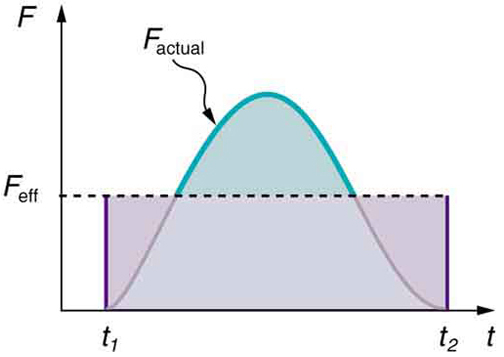In the realm of physics, understanding motion is fundamental. One crucial concept in this domain is impulse, which plays a pivotal role in analysing and describing the behaviour of objects in motion. In this article, we’ll delve into the definition of impulse, explore its formula, examine real-world examples, and discuss its diverse applications in physics.
Definition of Impulse:

Impulse can be defined as the product of force and the time interval over which the force acts upon an object. In simpler terms, it measures the change in momentum experienced by an object when a force is applied to it for a certain duration. Mathematically, impulse (J) is represented as:
J = F ⋅ Δt
Where:
- J = Impulse (in Newton-seconds or kg m/s)
- F = Force applied (in Newtons)
- Δt = Change in time (in seconds)
Formula for Impulse:
The formula for calculating impulse is straightforward: it’s the product of force and the time duration for which the force acts. This can be expressed as:
J = F ⋅ Δt
This formula essentially tells us that the greater the force applied over a longer period of time, the greater the impulse experienced by the object.
Examples of Impulse:
Let’s consider a few examples to better understand how impulse operates in real-world scenarios:
Ball hitting a Wall:
Imagine a ball moving towards a wall with a certain velocity. When it collides with the wall, the force exerted by the wall on the ball brings it to a stop. The impulse experienced by the ball due to this force can be calculated by multiplying the force exerted by the wall and the time duration of the collision.
Jumping on a Trampoline:
When a person jumps on a trampoline, the trampoline exerts an upward force on the person. This force acts over a certain period of time, allowing the person to bounce back up. The impulse experienced by the person can be calculated using the force exerted by the trampoline and the time duration of the jump.
Car Collision:
During a car collision, the force exerted on the occupants is a crucial factor in determining the severity of injuries. The impulse experienced by the occupants is determined by the force of the collision and the duration over which the force acts.
Applications of Impulse in Physics:
Impulse finds extensive applications in various branches of physics, some of which include:
Collision Analysis:
In collision analysis, impulse helps in understanding the changes in momentum of colliding objects. By analysing the impulse experienced during collisions, physicists can determine factors such as the forces involved and the resulting velocities of the objects after the collision.
Sports Science:
Impulse is widely used in sports science to analyse the mechanics of athletic movements. For instance, in sports like gymnastics and diving, understanding the impulse experienced during take-off and landing is crucial for optimising performance and preventing injuries.
Vehicle Safety:
In automotive engineering, impulse plays a vital role in designing safety features such as airbags and crumple zones. By calculating the impulse experienced during a collision, engineers can design effective safety mechanisms to reduce the impact forces on vehicle occupants.
Projectile Motion:
Impulse is integral to the study of projectile motion, where it helps in analysing the forces acting on projectiles such as rockets, missiles, and projectiles in sports like javelin throw and shot put.
In conclusion, impulse serves as a fundamental concept in physics, providing insights into the interactions between forces and objects in motion. By understanding the definition, formula, examples, and applications of impulse, physicists can unravel the mysteries of motion and apply this knowledge to various real-world scenarios.




